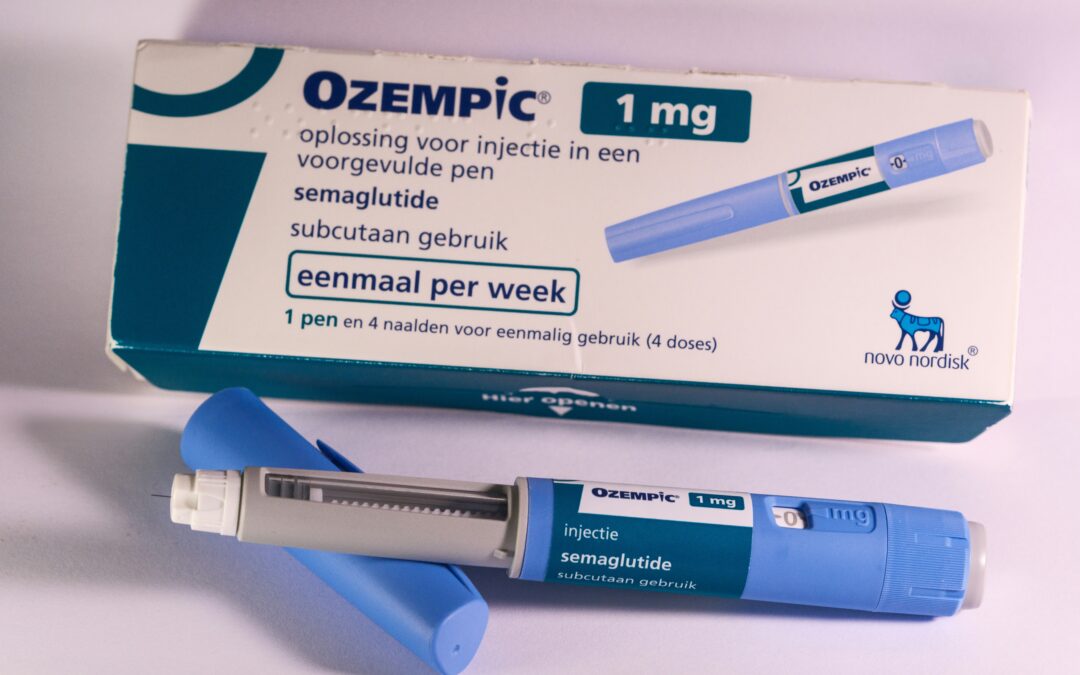Ever noticed how some people seem to naturally maintain a healthy weight and steady energy levels throughout the day? Their secret might lie in a powerful hormone called GLP-1, the same one behind those trending weight loss shots everyone’s talking about. But here’s the exciting news: your body produces this magical molecule naturally, and I’m about to show you how to make the most of its potential.
The Hidden Superpower in Your Gut
Imagine your digestive system as a sophisticated smartphone that’s constantly sending text messages to your brain about hunger, fullness, and energy needs. GLP-1 is like the premium messaging app that ensures these texts are delivered perfectly. When working optimally, it helps you:
– Feel satisfied with smaller portions
– Maintain stable blood sugar levels
– Reduce cravings for sugary foods
– Support a healthy metabolism
– Experience sustained energy throughout the day
GLP-1 is a 30-amino acid peptide hormone produced in special cells right inside your intestine [1]. It’s released in response to meal intake and plays a crucial role in regulating blood glucose levels, fat metabolism, and other vital biological functions[2].
Your Natural GLP-1 Boosting Blueprint
Here’s where things get really interesting. While medications like Ozempic work by flooding your system with synthetic GLP-1, research shows that certain lifestyle practices can influence your body’s own GLP-1 production. Think of it as fine-tuning your body’s internal software rather than installing a new app.
The Power Plate Method
Some studies suggest that certain foods may influence GLP-1 levels:
Plant Power for Protein: Imagine your body as a GLP-1 factory. When you eat plant-based proteins, like those found in lentils, chickpeas, or peas, your factory might work overtime compared to when you eat animal proteins like chicken or beef. For example, a hearty lentil soup might give your GLP-1 production a bigger boost than a chicken breast.
The Olive Oil Advantage: Think of fats as different types of fuel for your GLP-1 factory. Unsaturated fats, like the ones in olive oil, avocados, and nuts, seem to be premium fuel. They may rev up GLP-1 production more effectively than saturated fats found in butter or fatty meats. So, drizzling your salad with olive oil or snacking on a handful of almonds might give you more GLP-1 bang for your buck [3].
Supportive Sweeteners: Scientists are exploring some interesting ingredients that might be GLP-1 superstars. Resistant maltodextrin (a type of fiber) and D-allulose (a rare sugar) have shown promise in animal studies. While we can’t say for sure how they’ll work in humans yet, it’s like they’re potential candidates for a GLP-1 boost. These might eventually find their way into specially formulated foods or supplements, but more research is needed.
Remember, while these food choices may help, they’re not magic bullets. A balanced diet, regular exercise, and overall healthy lifestyle are key to supporting your body’s natural GLP-1 production.
Timing Matters
Just like your favorite coffee shop has peak hours, your body has optimal times for GLP-1 production. GLP-1 is released in response to meal intake, so aligning your eating schedule with your body’s natural rhythm might help maximize its benefits [4]. Here’s how you can make the most of this timing:
- Meal Frequency and Spacing:
Your body releases GLP-1 when food enters your digestive system. Some research suggests that eating 3 well-spaced meals might be more beneficial for GLP-1 release than frequent snacking. Try to allow 4-5 hours between meals. This gives your body time to fully process each meal and may lead to more significant GLP-1 spikes with each eating occasion.
2. Circadian Rhythm Alignment:
Your body’s internal clock, or circadian rhythm, influences hormone production, including GLP-1. Some studies indicate that eating earlier in the day may lead to better GLP-1 responses. For example, having a larger breakfast and lunch, with a lighter dinner, might be beneficial.
3. Time-Restricted Eating:
Limiting your eating window to 8-12 hours a day (e.g., eating between 8 AM and 6 PM) may help synchronize your meal times with your body’s natural metabolic rhythms. This approach gives your digestive system a longer fasting period overnight, which some research suggests could enhance GLP-1 sensitivity.
4. Consistency is Key:
Try to eat your meals at roughly the same times each day. This helps your body anticipate food intake and may optimize hormone release, including GLP-1.
5. The First Meal Matters:
Breaking your overnight fast with a balanced meal can trigger a significant GLP-1 response. Consider including protein and fiber in your breakfast to potentially enhance this effect.
Remember, while timing can play a role in optimizing GLP-1 production, it’s just one piece of the puzzle. The quality and composition of your meals, along with other lifestyle factors like sleep and exercise, all contribute to your body’s overall hormone balance and metabolic health.
Breaking Through Your Body’s Resistance
If you’ve been struggling with weight loss despite doing “everything right,” you’re not alone. The good news? Simple tweaks might help support your body’s natural GLP-1 response:
1. Get Moving: Research indicates that both single exercise sessions and long-term training can enhance GLP-1 levels in individuals with type 2 diabetes.
2. Stress Less, Signal Better
– Practice daily meditation or deep breathing
– Engage in gentle movement like yoga
– Spend time in nature
3. Prioritize Sleep
– Aim for 7-9 hours in a cool, dark room
– Establish a consistent bedtime routine
– Limit blue light exposure after sunset
The Beauty of A Holistic Approach
While GLP-1 meds like Ozempic have shown significant and consistent results in clinical trials and certainly have their place, tapping into your body’s natural GLP-1 potential through lifestyle changes can offer valuable health benefits[5]. By nurturing your gut-brain connection through food, exercise, sleep, and stress management, you’re going beyond a focus on just one hormone and instead, you’re supporting your entire metabolic system.
Remember, every body is unique, and what works for one person might need adjustment for another. Start with one or two changes that resonate most with you, and gradually build your personal health optimization routine. Your body has an incredible capacity to heal and balance itself – sometimes it just needs a gentle nudge in the right direction.
Citations:
1, 4) Holst, J. J. (2007). The physiology of glucagon-like peptide 1. Physiological Reviews, 87(4), 1409–1439. https://pubmed.ncbi.nlm.nih.gov/17928588/
2) Zheng, Z., Zong, Y., Ma, Y., Tian, Y., Pang, Y., Zhang, C., & Gao, J. (2024). Glucagon-like peptide-1 receptor: Mechanisms and advances in therapy. Signal Transduction and Targeted Therapy, 9, Article 134. https://doi.org/10.1038/s41392-024-01931-z
3) Beysen, C., Karpe, F., Fielding, B. A., Clark, A., Levy, J. C., & Frayn, K. N. (2002). Interaction between specific fatty acids, GLP-1 and insulin secretion in humans. Diabetologia, 45(11), 1533–1541. https://doi.org/10.1007/s00125-002-0964-9
5) Astrup, A. (2024). Reflections on the discovery GLP-1 as a satiety hormone leading to the development of semaglutide. European Journal of Clinical Nutrition. Advance online publication. https://doi.org/10.1038/s41430-024-01460-6


